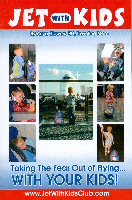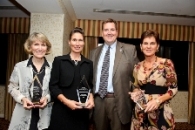Safer Children
Child restraint seats have been required for cars since 1982 — more than 27 years — yet the FAA has not mandated required Child Restraint Seats for children under the age of 2 in commercial planes.
All items on the plane, including coffee pots and pets are safer than our infants.
That’s why we need Congress to legislate required Child Restraint Seats for all children under the age of 2 on commercial aircraft.
The safest transportation for all passengers is a NADA/F Founding Goal.
See Safer Children – Testimonials for additional information (opens in PDF).
Timeline of Issues Affecting Children and Flight
In 1972 (35 years ago) the GAO (U.S. General Accountability Office) recommended mandatory child restraint seats in flight for children under the age of 2.
May 1995, Linda Daschle, FAA Acting Administrator, ordered a study about child seats. The FAA wrongly relies on a flawed conclusion that if the airlines require people to purchase a seat for a child under two that people will drive because it is less expensive. This is not true. People purchase airline seats for their children over the age of two, and some airlines offer infant ½ price reserved seats. Linda Daschle (wife of former Congressman Tom Dashle) has been an airline lobbyist since she left the FAA.
December 15, 1999, Jane Garvey, then FAA Administrator, stated that the FAA would mandate child restrain seats for children under the age of 2.
An FAA Advanced Notice of Proposed Rulemaking was published late 1990’s, and the FAA Technical Center in New Jersey had completed the work and recommended a TSO (Technical Standards Order) to accommodate different aircraft, children’s weight, and survivability for required child seats. Jane Garvey did try to keep her promise for required child seats and we were on the right track.
January 2001 the new administration created a new level of White House OMB (Office of Management and Budget), and a Presidential memo (E.O. 12866) required “cost effective solutions to rulemaking” to “maximize net benefits,” which basically thwarted aviation safety. This new level of bureaucracy gave themselves oversight of rulemaking at all levels, and the Rulemaking for Required Child Restraint Seats for children under age two never moved forward. OMB determined, with no public discussion, and refusal to meet with us, that “the benefits of the intended regulation did not justify the cost” thus denying safest transportation for children under age 2.”
November 5, 2001 – American Academy of Pediatrics called for an end to lap children under the age of two in airplanes.
August 2005 the FAA and NTSB decided to DELETE this important safety recommendation from the NTSB “Most Wanted” safety recommendations. Required child seats were on the NTSB Most Wanted list since the day the list began over 15 years ago.
The American Academy of Pediatrics has supported required Child Restraint Seats for children under 2 in flight for almost ten years.
The FAA states under Child Safety on Airplanes that “…the safest place for your little one during turbulence or an emergency is in an approved child restraint system (CRS) or device, not on your lap.” Their recommendation should have been mandated many years ago. Check the details about safest seats depending on the age and size of the child. The traveling public is not informed about the FAA recommendation; it should be mandated to protect our babies.
Additional Information and Products
ABC News: Car Seat Made Toddler Lone Plane Crash Survivor
Opens in PDF.

Childproof your flight
Brochure from the FAA (PDF).
Jet with Kids
Take the Fear out of Flying… with your kids!” offers helpful updated information on child safety in flight.
The Baby B’Air Flight Vest®
This item is sometimes used now for lap-held babies, and is especially helpful for young children. It secures the baby to your lap belt and has been tested to exceed FAA stress tests levels for aircraft seats.
Kids Fly Safe
Offers an FAA approved harness-style child safety device for kids 22 – 44 pounds.
Our work continues. When you fly, be sure to purchase seats so that each child has their own seat, and that children under age two are in a Child Restraint seat appropriate for their size.

